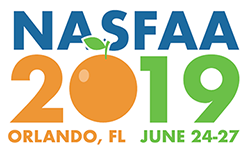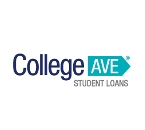Beyond Tuition: Getting to the True Cost of Attendance, 8:30 - 9:30 a.m.
By Allie Arcese, Sr. Director of Strategic Communications & Engagement
By Allie Bidwell, NASFAA Senior Reporter
Accurately calculating and communicating to students the costs to attend college can be critical to their success. But the numerous variables that go into the cost of attendance (COA) can make that calculation complex.
Laura Keane of uAspire explained research the organization has done on COA and how it’s communicated to students, finding non-tuition expenses make up more than half the total COA on average. “This is a big part of what it is to cover the cost of college,” she said. Keane said uAspire also found that “work-study doesn’t cut it”—the average full-time undergraduate with a Federal Work-Study job can cover just 18% to 19% of those non-tuition costs with earnings from their job. Keane also shared that indirect expenses were listed on 54% of college websites (of 820 examined) and took an average of 2.5 clicks to navigate from the homepage.
Calculating the costs to attend college beyond tuition and fees is complex, yet critical to students’ ability to complete their degree. Improved accuracy, consistency and transparency of costs for books, transportation, housing, and food are needed so students can make informed financial decisions and afford to graduate. A student-serving nonprofit, a leading researcher on living expenses, and a higher education institution will share how they tackle the complexities of indirect expense calculations and communicate them to students. Join us to share your expertise and inform solutions to support students' ability to cover the true costs of college.
Despite communications from financial aid offices, uAspire found through preliminary data from a student survey that one-third said they inaccurately estimated or were unprepared for the majority of indirect expenses. Forty-two percent said they stress about covering indirect expenses each month, and 38% were significantly concerned about how it would impact their ability to complete their degree.
Students shared that they wished there were lower rates or subsidies for on-campus food, a continuation of means-tested benefits for free or reduced meals, increased institutional awareness of indirect expenses and student struggles to cover them, and more on-campus jobs with higher wages, among other suggestions.
Robert Kelchen of Seton Hall University said it’s crucial for COA calculations to be as accurate as possible because if the listed amount is too low, students may be unable to make up the difference, work more than they should, and be at a greater risk of dropping out or “melting” between terms. If the COA is too high, he said, there are concerns about how much debt students take on. Students may also be scared by a high COA or price tag, and think “there’s no way they can come up with the money.”
Pam Fowler of the University of Michigan discussed the various factors that aid offices need to consider when calculating a COA, such as on-campus and off-campus housing, varied meal plans, personal expenses like child care, transportation, and other costs that may fluctuate.
The panel encouraged attendees to use different types of data to get the most accurate numbers for certain costs, such as through using a student survey.
Publication Date: 6/25/2019












You must be logged in to comment on this page.